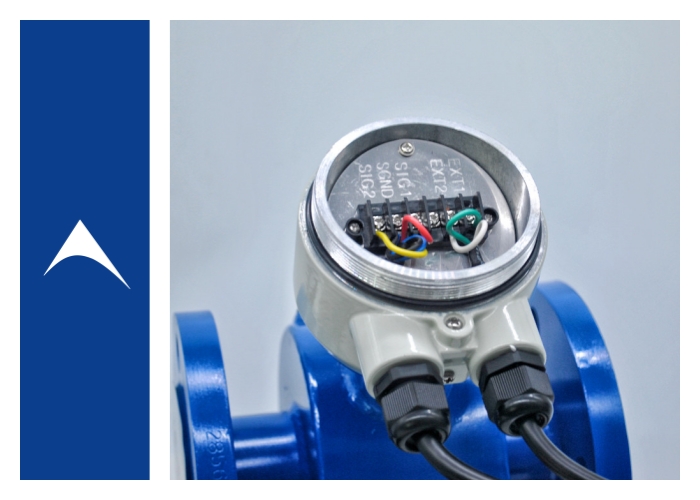
Understanding Electrode Material Selection in Electromagnetic Flowmeters
2025-10-29 15:05
In the field of industrial flow measurement, the electromagnetic flowmeter is one of the core devices for measuring the flow rate of conductive liquids. At the heart of every electromagnetic flowmeter lies its electrode material, a component that determines the meter’s overall performance. Since electrodes are in direct contact with the measured medium, they must achieve two essential functions: accurately detecting the induced electromotive force and transmitting the weak signal to the measurement circuit without distortion or loss. The choice of electrode material directly affects measurement precision, equipment reliability, and service life. Improper material selection may cause corrosion or wear under harsh conditions, leading to significant measurement errors or even equipment failure. Therefore, mastering the characteristics and selection principles of electrode materials is a key technical competence for industrial professionals.
Principles of Electrode Material Selection
Selecting the proper electrode material depends on multiple factors including corrosion level, abrasion, temperature, conductivity, and specific industry requirements.
Based on Corrosiveness
Tantalum: Highly resistant to nearly all chemicals except hydrofluoric acid and strong alkalis; ideal for highly corrosive media such as concentrated sulfuric or hydrochloric acid.
Platinum: Exceptional chemical stability; suitable for strong acids and bases except aqua regia; preferred in high-precision, high-corrosion environments.
316L Stainless Steel: Suitable for weakly corrosive or neutral solutions like industrial water, sewage, and mild acids.
Hastelloy B and C: Provide superior resistance to non-oxidizing and oxidizing acids respectively; widely used in chemical and marine industries.
Based on Abrasion
Tungsten Carbide: Extremely hard and wear-resistant, suitable for media with solid particles such as slurry, pulp, or mining fluids.
For low-abrasion media (e.g., clean water), stainless steel or titanium is adequate.
Based on Temperature
Platinum-Iridium or Platinum-Tungsten alloys are recommended for high-temperature fluids such as hot water or steam.
For normal-temperature liquids, stainless steel, titanium, or Hastelloy materials are reliable and cost-effective.
Based on Conductivity
For low-conductivity media such as pure water or oil, a high-sensitivity electrode material like Hastelloy or stainless steel ensures accurate signal detection.
For high-conductivity media, the selection depends more on corrosion and abrasion conditions.
Based on Industry Standards
Food and pharmaceutical sectors: Require hygienic-grade materials like stainless steel or titanium to prevent contamination.
Oxidizing or reducing media: Avoid electrodes that may trigger electrochemical reactions (e.g., platinum in hydrogen peroxide measurement).
Comparison of Common Electrode Materials
Titanium: Lightweight with strong corrosion resistance, ideal for seawater or chloride solutions; used in desalination and chlorine production.
316L Stainless Steel: Excellent balance of corrosion resistance, mechanical strength, and cost; widely used in water treatment, food, and beverage industries.
Platinum: Offers unmatched chemical stability; applied in laboratory and high-purity chemical flow monitoring.
Hastelloy B/C: Nickel-based alloys that perform well in acid and oxidizing conditions; preferred in petrochemical applications.
Tungsten Carbide: Outstanding hardness and wear resistance; suitable for slurry or abrasive fluid measurement.
Installation and Maintenance Tips
Avoid assuming that higher-grade materials are always better. For non-corrosive or clean water applications, 316L stainless steel provides sufficient accuracy at a lower cost. During installation, protect electrodes from impact and ensure firm electrical connections. Regular inspection—typically every one to three months—should include cleaning electrode surfaces and verifying signal stability.
Industry Applications
Environmental protection: Wastewater monitoring systems use stainless steel electrodes, while chemical waste management often relies on Hastelloy or tantalum for corrosion resistance.
Chemical industry: Sulfuric acid flow is measured using tantalum, hydrochloric acid with Hastelloy B, and precision chemical processes with platinum electrodes.
Food and pharmaceutical: Stainless steel and titanium electrodes ensure hygiene compliance during production of beverages or medical solutions.
Marine and mining: Titanium electrodes are ideal for seawater pipelines, while tungsten carbide is preferred for slurry and pulp flow.
Conclusion
The correct choice of electrode material is fundamental to the performance, reliability, and cost-efficiency of electromagnetic flowmeters. By understanding material characteristics and applying proper selection criteria, engineers can ensure stable operation and precise flow measurement across industries. As material science advances, new alloys and composites will continue to expand the application boundaries of electromagnetic flowmeters, driving innovation in modern industrial measurement systems.
electrode materialelectrode material
